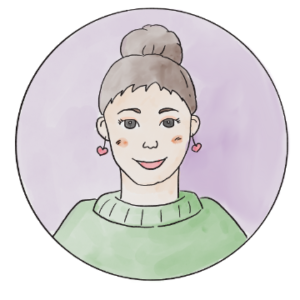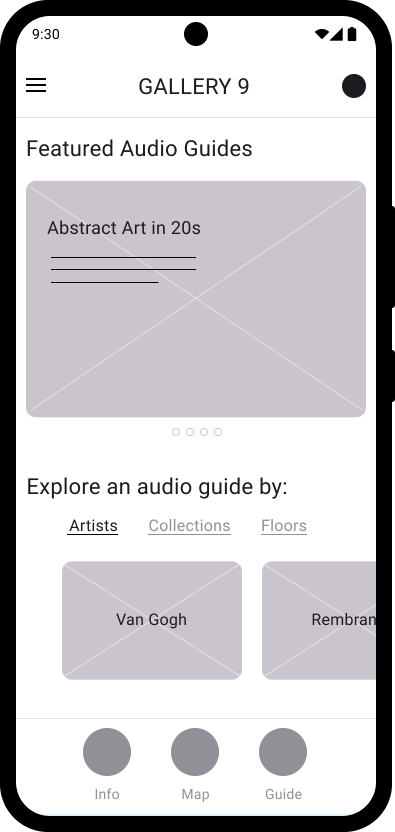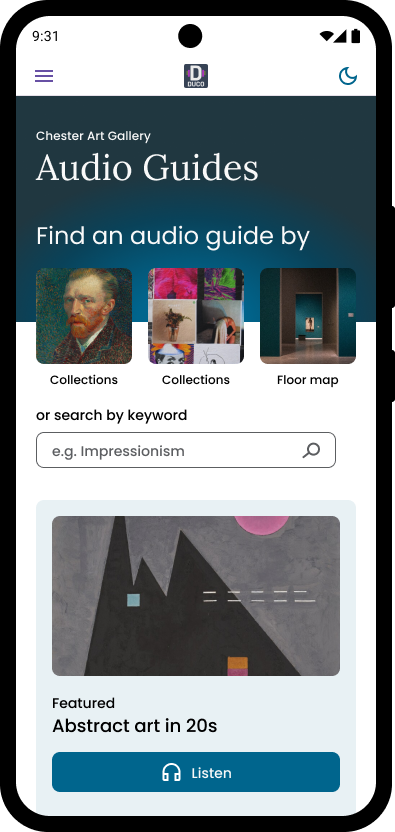
DUCO: Audio-tour app for art galleries
UX case study for self-guided audio tour app



Project overview
The product:
The problem:
The goal:
My role:
Responsibilities:

Understanding the user
User research: summary
I conducted online interviews and created empathy maps to gain a deeper understanding of users’ feelings, needs, and behavioral patterns. This research bridges the gap between the design team and users.
The research confirmed my primary assumptions of a multi language option and the addition of transcripts. Additionally, the research also revealed that the inclusion of transcripts is beneficial not only to non-English speakers, but also to a wide range of users.
Research insights
Unable to find an audio guide easily
Users want to see the entire list and filter it based on their needs
Transcripts and audio are not synchronized
Users want to see a connection between texts and audio
Options to select a language
Users wants to minimize input work and/or scrolling action to select a language
User persona

Kaori Nakamura
- Education: BFA Interior Design
- Hometown: Kyoto, Japan
- Occupation: Pursuing MFA at university
“Efficiency and productivity are important factors in my busy school life. It’s fun to think about how I can improve my hectic schedule.”
Kaori worked in a design firm in Tokyo as an interior designer for five years. She quit the job a year ago and is currently attending a design school to pursue her MFA in Textile Design. She is always busy working on her assignments, so she hopes to spend her spare time efficiently. Kaori frequently searches upcoming local art events and makes her daily schedule to be as productive as possible.
She thinks her English skill is good enough for daily activity, but she sometimes struggles when she tries to learn a new subject that requires an understanding of a special vocabulary.
Problem statement:
Frustration:
- “Sometimes I have to focus on what I hear instead of what I see because of my English skill.”
- “Attending in-person guided tour takes too long for me.”
- “After COVID It makes me bit uncomfortable with sharing audio device with someone else.”
Goals:
- To listen the audio in either English or Japanese based on the subject.
- I want to get useful information about the artwork while seeing it.
Starting the design
1. Paper wireframes
For this low-fidelity wireframes, I focus on three flows:
- Create a home screen which provides multiple options to access the audio guide of their choice quickly
- Display a language selection option before the guide begins
- Provide an intuitive audio player with enable/disable transcriptions option

2. Digital wireframes
Providing multiple search options to users improves the efficiency of accessing data and enhances accessibility.

3. Low-fidelity prototype
This low-fidelity prototype demonstrates a primary flow of selecting an audio guide, choosing a language option, playing the audio guide, and enabling/disabling transcript.

Usability study: findings
The first usability study was conducted with the low-fidelity prototype. After collecting findings from user input and incorporating them into the high-fidelity prototype design, I conducted the second usability study.
Round 1 findings
Round 2 findings
Refining the design
Mockups


After the first usability study, I moved the ‘Find an audio guide by’ section to the top so that users can access the search feature quickly.
Mockups 2


After the second usability study, I refined the layout and minimized ineffective space, reducing the need for users to scroll. I also strategically positioned more important content near the top to optimize the remaining screen space efficiently.
Key mockups




3. High-fidelity prototype
The refined version of the high-fidelity prototype shows an improved task flow, clear, and comprehensive design, aimed at increasing user accessibility

Takeaways
Impact:
The app enhanced visitors’ positive experience at the gallery.
“With this app, I can study artwork efficiently or simply enjoy my visit to the gallery!”
What I learned:
While designing the app, I learned that user studies and usability studies provide crucial information about how to improve the app’s design to enhance the user experience. Conducting research, whether or not it’s included, makes a significant difference in the design iteration.
Thank you!
Let's connect
Thank you for exploring my UX case study portfolio. If you have any questions or would like to discuss potential opportunities, please don’t hesitate to contact me. I look forward to connecting with you!